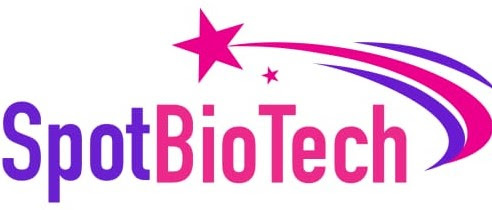In the realm of modern medicine, vaccines have emerged as one of the most powerful tools for preventing infectious diseases and safeguarding public health. They have played a pivotal role in eradicating or controlling once-devastating diseases such as smallpox, polio, and measles. While traditional vaccine production methods have served humanity well for decades, the integration of biotechnology has propelled vaccine development and production to new heights. This blog aims to provide an in-depth introduction to the concepts and applications of biotechnology in vaccine production.
Traditional
vs. Biotechnology-based Vaccine Production
Traditional vaccine
production methods involve using weakened or inactivated forms of the pathogen
to stimulate the immune system without causing disease. These methods have been
successful in generating immunity and controlling diseases. However, they often
require time-consuming processes and can carry safety risks associated with
handling live pathogens.
Biotechnology-based
vaccine production, on the other hand, harnesses the power of living organisms
and genetic engineering techniques to create safer, more effective, and
efficient vaccines. This approach involves using recombinant DNA technology to
introduce specific genes into host organisms, leading to the production of
target antigens that trigger an immune response. This process allows for the
development of vaccines without the need for the actual pathogen, reducing the
risk of disease transmission.
Key
Concepts in Biotechnology-based Vaccine Production
1. Genetic Engineering: Genetic engineering is a fundamental aspect
of biotechnology in vaccine production. Researchers identify and isolate genes
that encode antigens – the substances that trigger immune responses – from the
pathogen. These genes are then inserted into host cells, such as bacteria,
yeast, or mammalian cells, which act as "factories" to produce the
desired antigens.
2.
Recombinant DNA Technology: Recombinant DNA technology
involves combining genetic material from different sources to create new DNA
sequences. In vaccine production, this technology is used to insert the genes
encoding antigens into the host cells' DNA. The host cells then replicate and
express these genes, producing the target antigens.
3.
Expression Systems: The choice of host organism or
expression system is critical for successful vaccine production. Bacteria like
Escherichia coli and yeast like Saccharomyces cerevisiae are commonly used due
to their rapid growth and ease of manipulation. Mammalian cell lines are
preferred for complex protein antigens that require proper folding and post-translational
modifications.
4.
Protein Purification: Once the host cells produce the target
antigens, purification processes are employed to isolate and concentrate the
desired proteins. This step ensures that the final vaccine contains the pure antigen
without any contaminants.
5.
Adjuvants: Adjuvants are substances added to vaccines to
enhance the immune response. Biotechnology allows for the development of novel
adjuvants that can improve the vaccine's efficacy by stimulating a stronger and
longer-lasting immune reaction.
Applications
of Biotechnology in Vaccine Production
1.
Recombinant Subunit Vaccines: These vaccines contain
purified antigens or antigenic subunits produced through biotechnology.
Recombinant subunit vaccines are safer since they do not contain live pathogens
and can be designed to focus on specific immunogenic parts of the pathogen.
2.
DNA Vaccines: DNA vaccines involve directly
introducing the DNA encoding antigens into the body. The host cells then
express these antigens, triggering an immune response. This approach has the
advantage of simplicity and potential rapid development.
3.
Viral Vector Vaccines: Viral vector vaccines use modified
viruses to deliver genetic material encoding the target antigen into host
cells. The cells then produce the antigen, stimulating an immune response.
These vaccines are being explored for diseases like COVID-19.
4.
mRNA Vaccines: mRNA vaccines, like the COVID-19
vaccines developed by Pfizer-BioNTech and Moderna, utilize synthetic mRNA to
instruct cells to produce a viral protein, triggering an immune response. This
approach offers speed and flexibility in vaccine development.
5.
Vaccine Platforms: Biotechnology has facilitated the
development of versatile vaccine platforms that can be adapted for various
diseases. For instance, the same expression system can be engineered to produce
different antigens, allowing for rapid responses to emerging infectious
threats.
Benefits
and Future Directions
Biotechnology has
revolutionized vaccine production by making it faster, safer, and more
adaptable. The ability to design and engineer vaccines based on the knowledge
of pathogens' genetic sequences has accelerated vaccine development timelines.
Additionally, the flexibility of biotechnology platforms allows for swift
modifications and updates to vaccines in response to new variants or emerging
diseases.
The ongoing COVID-19
pandemic has showcased the agility of biotechnology in vaccine development.
Within a remarkably short period, multiple biotechnology-based vaccines were
developed and authorized for emergency use, underscoring the potential of this
approach to revolutionize disease prevention and control.
Challenges
and Ethical Considerations
While the integration
of biotechnology in vaccine production offers immense promise, it also presents
challenges and ethical considerations. These include:
1.
Safety and Efficacy: Rigorous testing and regulatory
scrutiny are crucial to ensure the safety and efficacy of biotechnology-based
vaccines.
2.
Access and Equity: The rapid development of cutting-edge
vaccines can lead to disparities in access between countries with varying levels
of technological and infrastructural capabilities.
3.
Intellectual Property: Intellectual property rights and
patent issues can affect vaccine availability and affordability, particularly
in global health emergencies.
4.
Public Acceptance: Public perceptions of biotechnology and
genetic engineering may impact vaccine acceptance. Communication and education
efforts are essential to build trust.
Conclusion
The integration of
biotechnology into vaccine production represents a transformative leap forward
in disease prevention and control. By leveraging genetic engineering,
recombinant DNA technology, and innovative expression systems, biotechnology
enables the rapid and precise development of vaccines against a wide range of
diseases. The COVID-19 pandemic has highlighted the potential of biotechnology
to respond swiftly to emerging threats, underscoring the importance of
continued research, collaboration, and ethical considerations in this field. As
biotechnology continues to evolve, the synergy between science, technology, and
medicine offers a brighter and more resilient future for global health.


